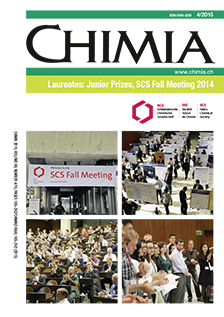Lightening up Ruthenium Complexes to Fight Cancer?
DOI:
https://doi.org/10.2533/chimia.2015.176Keywords:
Light-activated prodrugs, Photoactivated chemotherapy, Photodynamic therapy, RutheniumAbstract
In medicine, light is used in a medical treatment called photodynamic therapy (PDT) to treat some types of cancer and skin diseases. This technique generally allows for reduced side effects compared to traditional chemotherapy. However, PDT is not fully effective on hypoxic tumors (i.e. lacking oxygen). To overcome this important drawback, photoactivated chemotherapy (PACT) agents have been designed to obtain light-mediated cancer cell death via an oxygen-independent mechanism. Ruthenium complexes have already been and are currently deeply explored as traditional anticancer agents. However, as reported in this short review article, such compounds can also bring novel opportunities in the field of light-mediated cancer treatment. Herein, we report on our findings in the optimization of Ru(II) polypyridyl complexes as PDT and PACT agents for the potential treatment of cancer and, interestingly, also of bacterial infections.Downloads
Published
2015-04-29
Issue
Section
Scientific Articles
License
Copyright (c) 2015 Swiss Chemical Society

This work is licensed under a Creative Commons Attribution-NonCommercial 4.0 International License.
How to Cite
[1]
Chimia 2015, 69, 176, DOI: 10.2533/chimia.2015.176.







